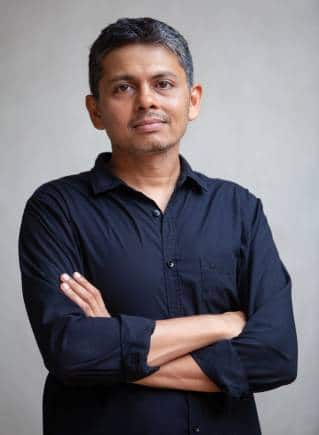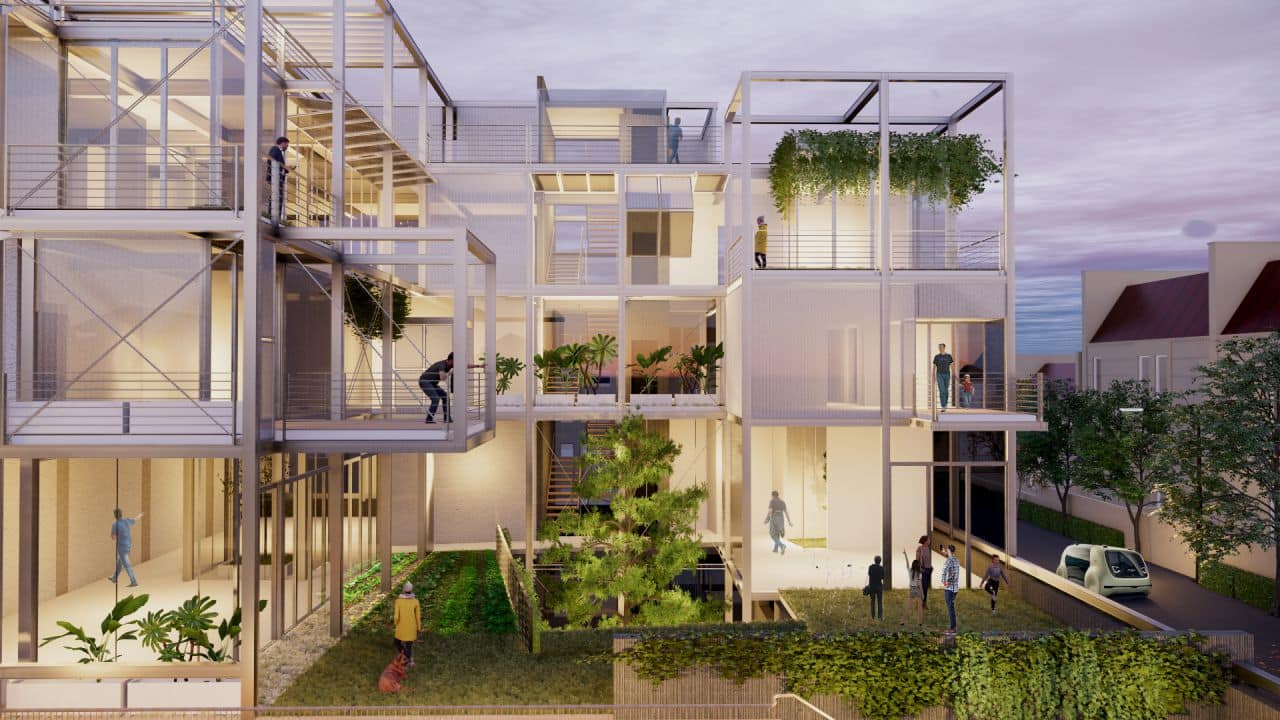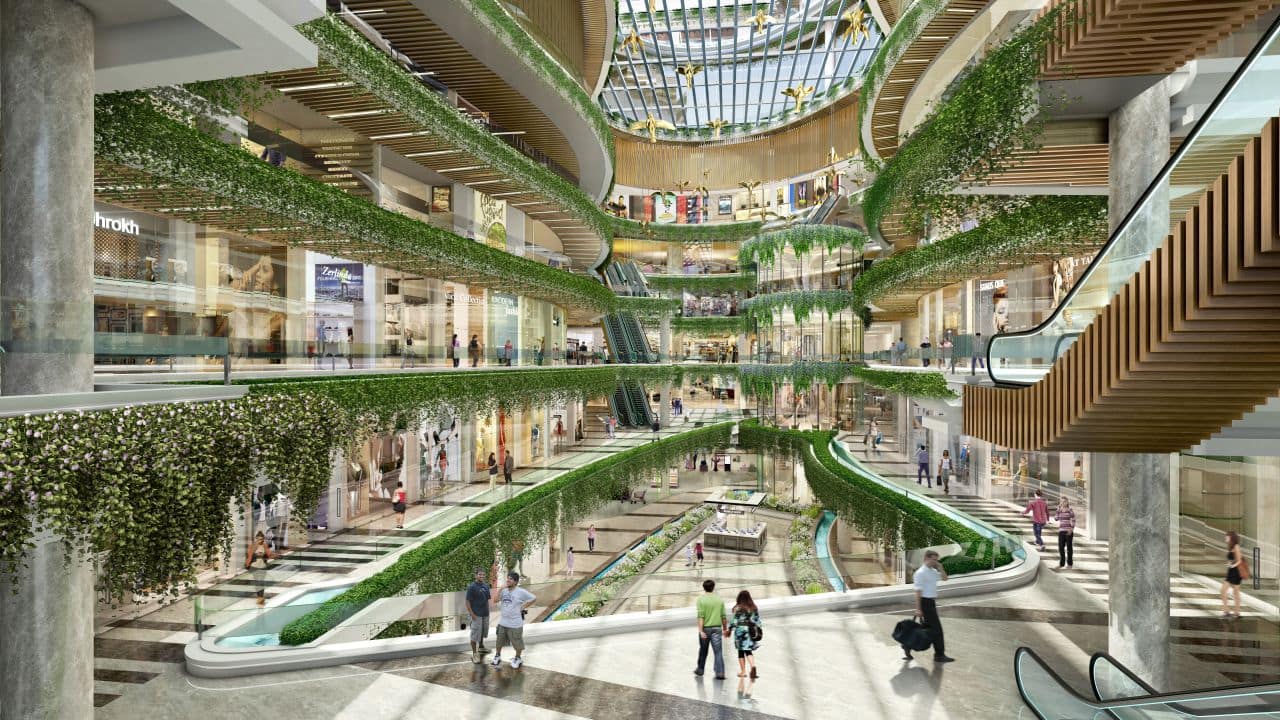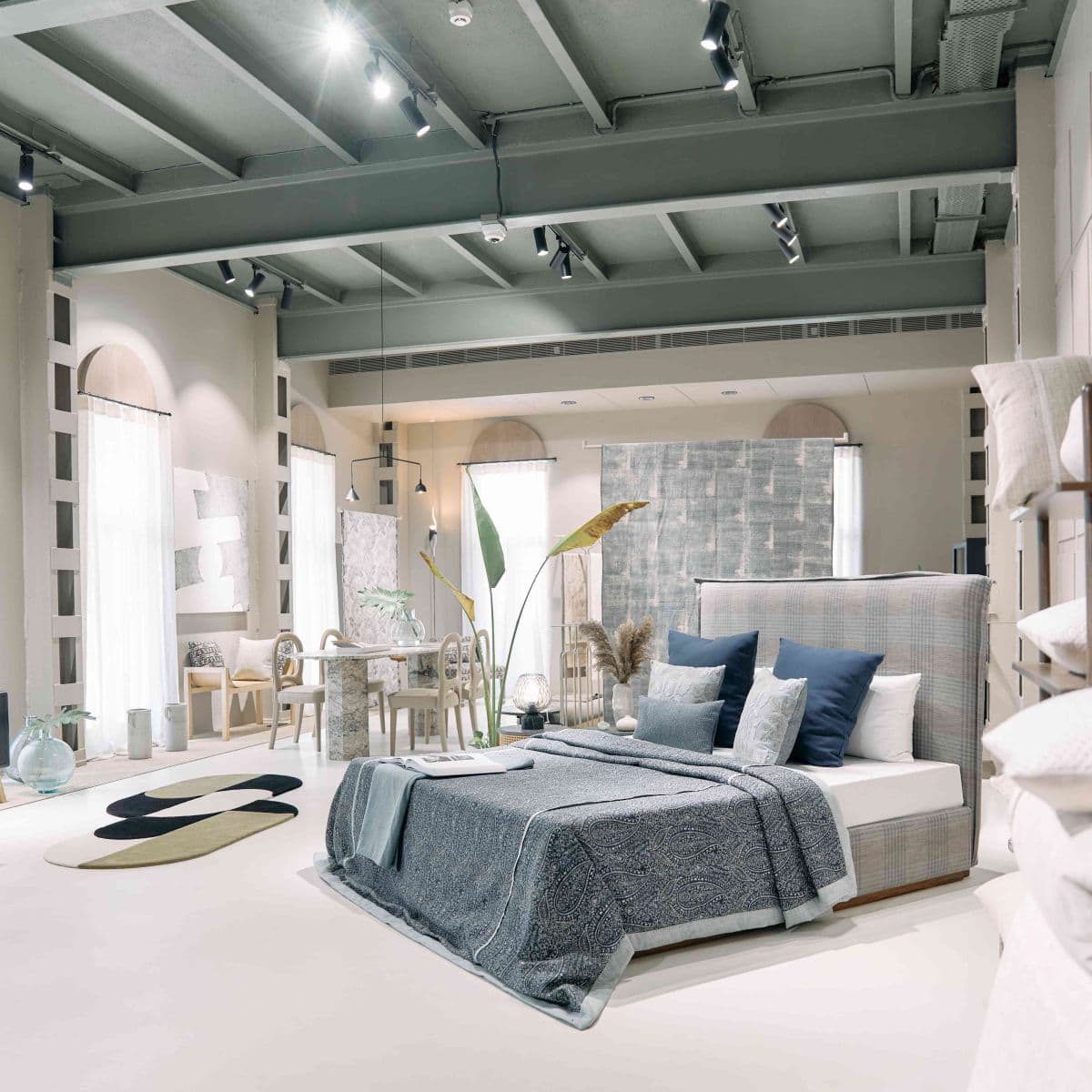



Our idea of luxury draws from our principles of ‘Conscious Design’—an approach that celebrates local resources and cultural influences, encourages minimizing consumption, the frequent use of locally-available and reclaimed materials, creation of seamless indoor-outdoor connections, optimisation of daylight in the home or space we are designing, and the strategic integration of regional craft.
Covid has renewed the focus on movement regulation, ingress and egress of people and vehicles, the need for optimizing air circulation and cross-ventilation, as well as designing hygienic, dust-free spaces—design considerations that are intrinsic to our projects. At the studio, we continue to examine how we can reinforce these methodologies in incremental and scalable ways to address the challenges of the 21st century.
 Ankur ChoksiThe pandemic is merely accelerating the transition in the meaning of luxury itself—beyond owning possessions to seeking unique experiences. A new consciousness—of being socially and environmentally proactive—is slowly but surely changing the way people engage with brands. Choices often act as markers of identities that consumers and communities create for themselves.
Ankur ChoksiThe pandemic is merely accelerating the transition in the meaning of luxury itself—beyond owning possessions to seeking unique experiences. A new consciousness—of being socially and environmentally proactive—is slowly but surely changing the way people engage with brands. Choices often act as markers of identities that consumers and communities create for themselves. The new paradigms of luxury can become a catalyst for change. Design processes need to be led by people and methodologies that recognise regional skill sets and empower local communities.
The idea of luxury is moving away from rarity and opulence. The Quorum, a members-only club in Gurugram, is a recent project whose business model is built on the need for an urban hub that creates meaningful value in people’s lives. Our spatial approach here has focused on flexibility, openness, and pockets of distinctive and enriching experiences for varying needs and moods.
Akshat Bhatt, Principal Architect, Architecture DisciplineLuxury has a lot to do with the quality of space, light and air than the mere application of materials or shag pile carpets. Covid, and the resulting lockdowns, have sped up the revolution that was expected in the future. The switch to virtual meetings and online collaboration has necessitated the creation of multi-use and flexible spaces. The sustainable design tenets we follow to create homes are: minimise consumption, maximise efficiency, reduce waste, and generate energy.
What has changed for everyone is the idea of inhabiting a city. Cities have become mankind's new natural habitat but our planning paradigm seems to have failed in the present moment. Decentralised cities will emerge soon.
 Akshat Bhatt
Akshat BhattFlexibility is at the fulcrum of post-Covid design. At Architecture Discipline, we have never believed that buildings are like traditional temples or classical forms that cannot be altered. We see them as flexible frameworks that interact with each other. For instance, in the Discovery Centre project in Bangalore, the façade can be variously opaque, translucent and transparent, depending on how the internal spaces are configured.
This is going to be the century of recuperation. So, let’s not destroy space, forests, and consume more water. Treating our waste and generating our energy and reducing consumption are the miracle we need to save our planet.Reduced physical interaction in offices, touch-free doors, faucets and WCs will become the norm with fewer shared equipment. We may witness the rise of mobile workspaces, ushering in an era of reduced transport and carbon emissions. People may not refurbish offices so often, reaffirming the importance of thoughtful design that will remain relevant for at least a few generations.
As we’ve been forced to stay indoors, our homes have re-emerged as sanctuaries—places of safe and socially distanced work, leisure, and engagement.
I envision low-rise residential developments, three to four storeys high that are navigable on foot, allowing for easier isolation. Each sector would be serviced by autonomous travel capsules for individuals or groups of 2-4 people, providing a safe, socially distanced public transit solution.
Residential units would be designed as modular, open-ended frameworks or well-serviced, well-lit, adaptable spaces that can be used for multiple activities now or in the future, increasing the lifespan of the building. Isolation wards could be housed in basements with direct access to sunken green courtyards for fresh air and light. To remain relevant longer than its period of conception, buildings will need to rely on groundwater for water requirements and solar panels for energy, and incorporate passive systems such as light wells and wind tunnels to improve their energy efficiency. Mechanical cooling requirements will be reduced through earth air tunnels, and green spaces and open gardens will let in natural light and fresh air.
Open-plan studio apartments with collapsible partition walls, roofs and flexible storage systems will allow residents to reconfigure their homes as needed.
Row houses or apartments in expensive but dense areas are losing favour to the standalone villa or farmhouses. This, I suspect, is a temporary change, as the choice of an expensive condominium over a standalone villa is not based on one reason only.
As social distancing becomes integral to our spatial engagements, new definitions of social proxemics are emerging, creating a definitive impact on our urban life’s most essential aspect — commuting. The Capsule for Automated Transit (CAT), designed by us, attempts to rethink post-pandemic mobility. A CAT is designed to offer socially distanced mobility, allowing commuters to choose between a singular travel system and a segregated multi-user travel system. The sChoker is a concept proposal for a smart social distancing neckpiece that allows its users to monitor proximity in public spaces. It makes use of simple PIS thermal sensors to detect the close presence and inform the host so that she can ‘distance’ appropriately.
 By Architecture DisciplineMitu Mathur, Director, GPM Architects and Planners
By Architecture DisciplineMitu Mathur, Director, GPM Architects and PlannersThe notion of design has shifted beyond luxury and aesthetics to include parameters such as safety, wellbeing and functionality. The true luxury that we seek is through the spaces we occupy – from our homes to our workspaces, everything has to be carefully designed to accommodate these requirements while ensuring healing and wellness.
The time we spent isolating has allowed us to promote community living and ensure a nature-sensitive approach in our projects. The unprecedented impact of the pandemic on all industries has shifted our approach towards creating designs that are resilient and meaningful for the future.
 Mitu Mathur
Mitu MathurInnovative features such as a small study area for study/work from home for the entire family have now become imperative. Introducing sizeable balconies and open areas within the residential towers will help enhance the experience of vertical living for the residents.
The concept of 'resort to residence' or 'residence as a resort' is also picking up rather fast. With residential spaces becoming our homes, workspaces and leisure areas all-in-one, the need is to develop them with all facilities in one place.
The need for safer public spaces and sustainability concerns are taking a front seat in the design of large-scale developments. A model to explore is the open-to-sky high street 'haat' experience, which offers the best of both worlds – access to multiple retail stores and open spaces for customers to engage in, with multiple galleries, piazzas and landscaped courtyards.
Within homes, the need for separate office and study spaces is on the rise, with clients demanding segregated zones to balance their work lives. Earlier, the approach was to keep the plan open and extravagant, but the need for personal space has changed the way we live.
At a few of our recent projects, such as Mapsko Mountville, Rangoli Greens and The Amaryllis, we have envisioned a safe and sustainable campus with intricate green spaces. In Rangoli Greens, Jaipur, 5.5 acres of green space in the new-age apartment complex seeks to bridge the gap between nature and users. All the housing units are open from three sides, enabling cross ventilation and ample daylight.
In large-scale corporate and commercial spaces, the open-plan concept is no longer relevant. Smaller meeting rooms that can accommodate two to three people, physical barriers between workstations, and dedicated workspaces with adequate noise control are the new requirements. Mahagun Marina Walk in Greater Noida incorporates rich vegetation and water bodies, which allows passive cooling and improves air quality. The mall is akin to a ‘retail park' with multiple options and the experience of walking in a garden.
 Mahagun Marina Walk in Greater Noida.Yogesh Chaudhary, Director, Jaipur Rugs Company Luxury creates a feeling of pure joy with its authenticity, rarity and quality. It can be a soulful experience or a unique masterpiece of classic craftsmanship. Professionally, I have realised that the values of empathy, shared wisdom, humility, integrity and simplicity, which the Jaipur Rugs brand is based on, are more relevant to today’s luxury market.
Mahagun Marina Walk in Greater Noida.Yogesh Chaudhary, Director, Jaipur Rugs Company Luxury creates a feeling of pure joy with its authenticity, rarity and quality. It can be a soulful experience or a unique masterpiece of classic craftsmanship. Professionally, I have realised that the values of empathy, shared wisdom, humility, integrity and simplicity, which the Jaipur Rugs brand is based on, are more relevant to today’s luxury market. Post-Covid, the design will keep co-existence at its core. The concept of feeding off your surroundings is no longer acceptable. People are returning to the basics of design with a practical and human approach, and with healing as the core focus.
 Yogesh Chaudhary
Yogesh ChaudharyThe spotlight on handmade Indian brands has been a good thing, but there is a lot more ground that needs to be covered. We have millions of artisans practising ancestral art forms whose value is not evident to the customers.
The 40,000 strong networks of artisans at Jaipur Rugs are uniquely placed to work while adhering to social distancing norms. Weavers receive raw material at their gates and work from the comfort of their homes. Having found sustainable livelihood in villages, several weavers have not migrated to cities while many came back, thus reducing the ever-ballooning clutter of big cities. This model helps the weavers to protect their income in difficult times.
Technology has been a great leveller. In the case of any difficulties or challenges, the weavers can report it to their quality supervisors digitally, who then updates the information on the in-house ‘Tana Bana’ app, which sends alerts to the head office in real-time. Our frontline staff of bunkar sakhis and branch managers gave adopted Zoom calls and digital meetings rather easily.
In May 2020, we launched our first-ever completely digital collection, Concoction by Shantanu Garg, followed by three more digital collections right up to April 2021. Our client interactions and customer engagement have moved online and can reach out to an even wider base of audience.
Co-existence with nature is going to be the focal point of all design aesthetics, ensuring that the home, office, shopping mall or theatre is a space that clams and heals. I see the use of more natural materials in home décor.
People will spend more on conscious luxury brands. Luxury consumers are as interested in the back-story as they are in the product. Everyone wants to take home a happy story and brands that can provide those, are the ones that will flourish.
Concepts such as ‘by-appointment store visits and home trials ensure that shopping is a curated experience. While these changes might not all continue in a normalised world, they will leave their mark on the way people perceive shopping. The customisation of the retail experience is real.
 From Jaipur RugsChanya Kaur, Founder, The Pure Concept Home
From Jaipur RugsChanya Kaur, Founder, The Pure Concept HomeThe pandemic has made it imperative for fostering luxury that goes hand-in-hand with functionality. It’s pointless to invest in luxury pieces that don’t end up getting used and don’t do justice to the purpose of their creation.
The trend veers towards a ‘lived-in’ aesthetic with cosy rather than opulent and grand interiors that feel unapproachable and unusable. There is an emergence of architecture and furniture design with curved silhouettes, that implies softness and romantic, free imagination. I see an enthusiastic focus on indoor plants for lush vibrancy, as well as natural materials such as marble and stone.
 Chanya Kaur
Chanya KaurThere’s greater attention being paid to the nature and quality of home décor. There has to be scope for striking personal resonance. There is a shift from ‘ostentatious-luxe’ and ‘glam’ to minimal, earthy décor. People are refraining from impulse buying, with the focus on collecting (art and objet d’art) that is a statement of their value systems.
 By The Pure Concept Home
By The Pure Concept Home Discover the latest Business News, Sensex, and Nifty updates. Obtain Personal Finance insights, tax queries, and expert opinions on Moneycontrol or download the Moneycontrol App to stay updated!
Find the best of Al News in one place, specially curated for you every weekend.
Stay on top of the latest tech trends and biggest startup news.